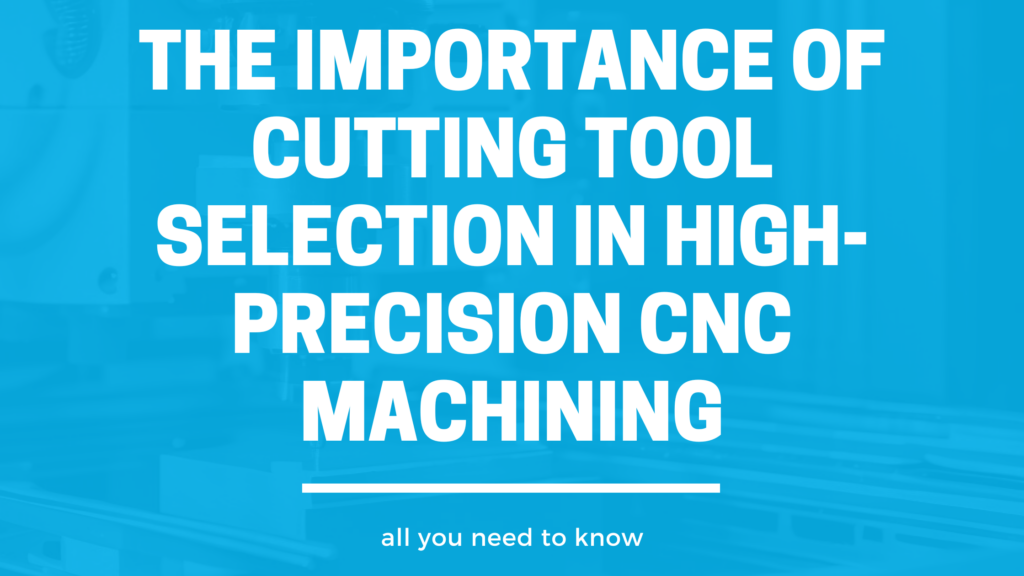The Importance of Cutting Tool Selection in High-Precision CNC Machining

In the field of high-precision CNC machining, selecting the right cutting tools is a critical factor in ensuring quality, performance, and profitability. At GM Precision, every project is executed with extreme rigor, and choosing the right cutting tools plays an essential role at every stage of the machining process.
Performance and precision: the foundations of machining
The cutting tool is the direct interface between the machine and the material. It directly influences dimensional accuracy, surface finish, execution speed, and the tool’s lifespan. In an environment where tolerance is measured in microns—as is the case with many parts produced at GM Precision—the tool must be perfectly suited to the material being machined, the type of operation (milling, drilling, turning), and the cutting conditions.
Tool materials and their impact
Cutting tools are typically made from tungsten carbide, ceramic, cubic boron nitride (CBN), or polycrystalline diamond (PCD). The choice of tool material is crucial when machining complex materials such as titanium, hardened steel, or aluminum alloys. Each material offers specific properties in terms of wear resistance, heat dissipation, and cutting capability.
The importance of tool coatings
Tool coating is another key performance factor. Coatings such as TiAlN (titanium aluminum nitride) or DLC (Diamond-Like Carbon) help extend tool life, reduce friction, and improve the quality of the machined surface. A well-coated tool also enables higher cutting speeds and shorter cycle times.
Adapting to machined materials
Each material reacts differently to machining. Stainless steel, for instance, is abrasive and generates significant heat, requiring wear-resistant tools and optimal lubrication. Aluminum, on the other hand, can adhere to the tool if it is not properly adapted, which affects surface finish. GM Precision always ensures that the ideal tools are used based on the characteristics of the material being machined.
Optimizing productivity and reducing costs
Choosing the right tool not only ensures consistent quality but also helps reduce downtime, scrap, and tool consumption. This translates into improved productivity and lower production costs. Modern workshops like GM Precision use simulation software and tool databases to select the best possible combinations according to the client’s specifications.
The importance of training and expertise
Even the best tool on the market will not deliver the desired results without strong technical expertise. GM Precision machinists are trained to understand different tool behaviors, adjust cutting parameters accordingly, and respond quickly to signs of wear or reduced efficiency. Human expertise remains a key factor in a highly technological environment.
Conclusion
In an industrial production context where precision and efficiency are non-negotiable, cutting tool selection is a strategy in its own right. At GM Precision, this strategy is integrated into every process, allowing them to deliver optimal results, reduce costs, and maintain a consistently high level of quality. Technology does not replace expertise, but when used effectively, it amplifies it.
The Importance of Cutting Tool Selection in High-Precision CNC Machining

In the field of high-precision CNC machining, selecting the right cutting tools is a critical factor in ensuring quality, performance, and profitability. At GM Precision, every project is executed with extreme rigor, and choosing the right cutting tools plays an essential role at every stage of the machining process.
Performance and precision: the foundations of machining
The cutting tool is the direct interface between the machine and the material. It directly influences dimensional accuracy, surface finish, execution speed, and the tool’s lifespan. In an environment where tolerance is measured in microns—as is the case with many parts produced at GM Precision—the tool must be perfectly suited to the material being machined, the type of operation (milling, drilling, turning), and the cutting conditions.
Tool materials and their impact
Cutting tools are typically made from tungsten carbide, ceramic, cubic boron nitride (CBN), or polycrystalline diamond (PCD). The choice of tool material is crucial when machining complex materials such as titanium, hardened steel, or aluminum alloys. Each material offers specific properties in terms of wear resistance, heat dissipation, and cutting capability.
The importance of tool coatings
Tool coating is another key performance factor. Coatings such as TiAlN (titanium aluminum nitride) or DLC (Diamond-Like Carbon) help extend tool life, reduce friction, and improve the quality of the machined surface. A well-coated tool also enables higher cutting speeds and shorter cycle times.
Adapting to machined materials
Each material reacts differently to machining. Stainless steel, for instance, is abrasive and generates significant heat, requiring wear-resistant tools and optimal lubrication. Aluminum, on the other hand, can adhere to the tool if it is not properly adapted, which affects surface finish. GM Precision always ensures that the ideal tools are used based on the characteristics of the material being machined.
Optimizing productivity and reducing costs
Choosing the right tool not only ensures consistent quality but also helps reduce downtime, scrap, and tool consumption. This translates into improved productivity and lower production costs. Modern workshops like GM Precision use simulation software and tool databases to select the best possible combinations according to the client’s specifications.
The importance of training and expertise
Even the best tool on the market will not deliver the desired results without strong technical expertise. GM Precision machinists are trained to understand different tool behaviors, adjust cutting parameters accordingly, and respond quickly to signs of wear or reduced efficiency. Human expertise remains a key factor in a highly technological environment.
Conclusion
In an industrial production context where precision and efficiency are non-negotiable, cutting tool selection is a strategy in its own right. At GM Precision, this strategy is integrated into every process, allowing them to deliver optimal results, reduce costs, and maintain a consistently high level of quality. Technology does not replace expertise, but when used effectively, it amplifies it.

